One Simple Trick for Evaluating a Book’s Level
There are some great resources to decide if your child is ready for a novel, but there’s an even easier way. In the following article, Heather shares one simple trick for evaluating a book’s level.
I can’t tell you how many times I’ve had the same conversation. A parent wants to know if a book is appropriate for her child – if she should be allowed to read a particular novel.
Is he ready for Harry Potter? Charlie & the Chocolate Factory? Ender’s Game? Lord of the Rings? You name it.
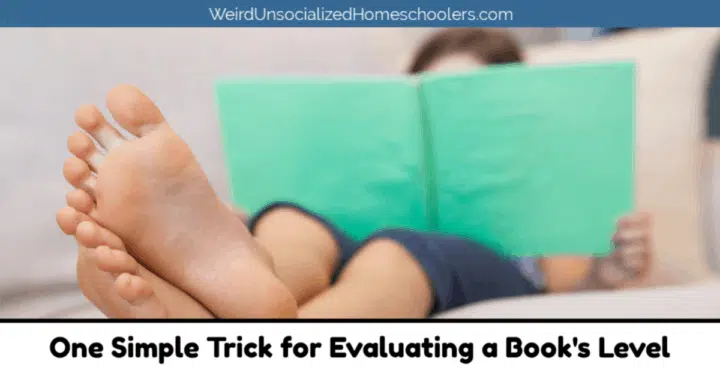
There are some great resources, like Common Sense Media and even Scholastic, that rate books by interest level as well as difficulty. But there’s one simpler trick that works almost every time. This trick makes it a breeze to evaluate a book’s level and determine if it’s right for your child.
It’s just one simple question.
The One Trick to Evaluating a Book’s Level
Ask yourself this one question. How old is the protagonist?
By answering this simple question, and then comparing that age to your child’s emotional (or social) maturity, you have a pretty good idea of whether or not the book is appropriate. Would your child have someone of that age in his or her peer group? Then he’s likely ready. Themes of the five-year-old main character in Froggy Plays Soccer will be relevant and developmentally appropriate for five-year-olds (+/- a year or two).
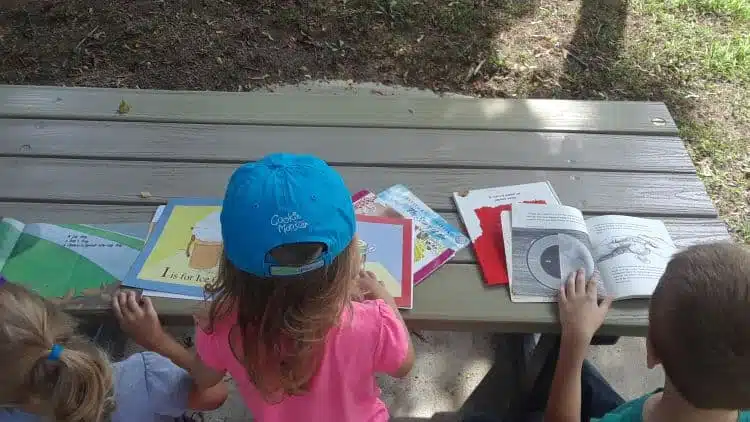
The same is true of a teenage protagonist. If the main character is thirteen, it’s probably going to be a coming of age novel with themes about identity, relationships, etc. that may not be appropriate for an eight- or ten-year-old, even if their reading level can handle it.
Now, I’m NOT saying I know your child and what he or she should be reading. Every child is different. Every family is different. A younger sibling will probably be able to handle certain themes sooner, simply because he’s already encountered them through his older brother’s or sister’s friends and conversations. Another child (like mine) maybe be intellectually ready for specific topics but in no way emotionally mature enough to handle them. So we wait.
One excellent example of this is the Harry Potter series. The first couple of books, when Harry is 11 and 12, are somewhat lighthearted, fun adventures. The later books, when he’s 15-18, are full of much darker and more complicated experiences, romantic interests, and more.
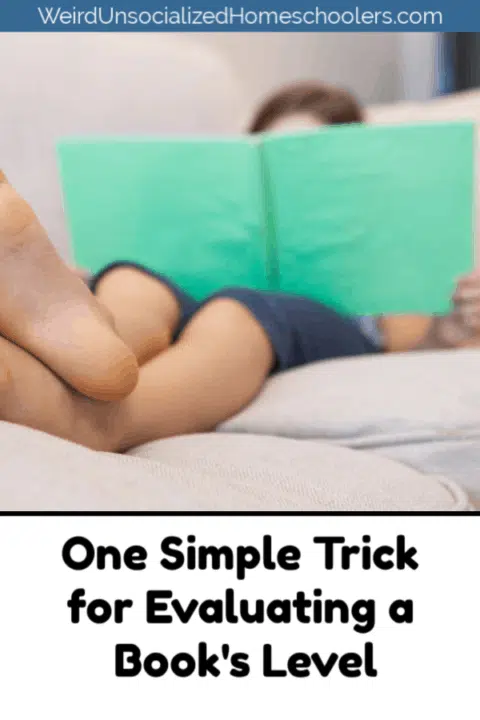
What if There’s More Than One Protagonist?
In books about families, such as The Lion, Witch, and the Wardrobe or The Boxcar Children, there will be multiple protagonists. In this case, the general rule is that the themes will be appropriate for most of the age span, trending toward the middle. Older readers will sympathize with and connect with the struggles of the older siblings in trying to keep their younger ones in check, and younger siblings will see themselves in the precocious little ones who always end up saving the day.
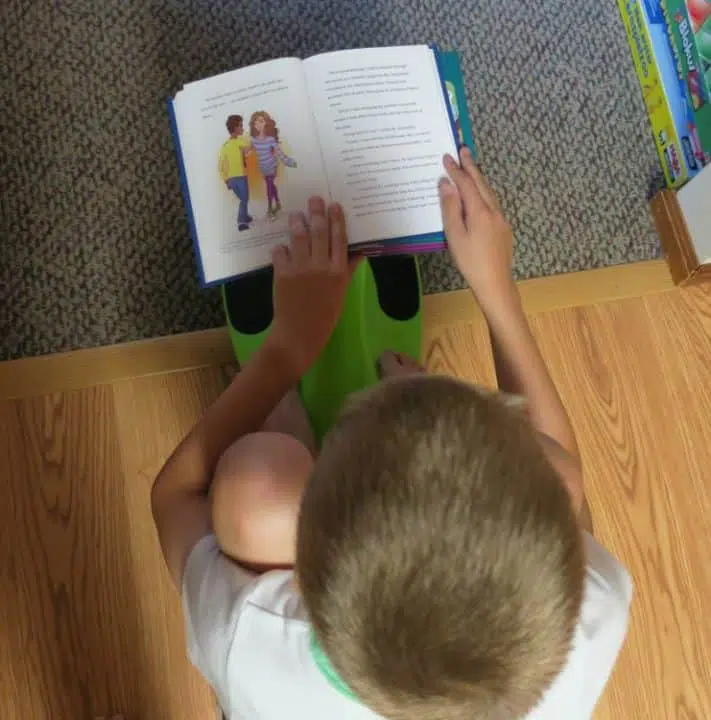
Are there exceptions?
There are always exceptions. The best way to know if a book is appropriate is to read it first. Don’t trust a curriculum guide, friend, neighbor, or librarian to know what you think is right for your kid.
Growing up, I still remember reading books that were beyond me. I picked up The Great Gatsby when I was 12. I read it, but I missed so much. Now, with my kids, I am particular about what they read, not because I want to be a stickler but because I’ve seen the absolute magic and delight that is possible when the book is at a level to meet the child and capture her imagination.
There are thousands of amazing books out there. Books we love, that our kids will love, that are appropriate for them and to which they can relate. Try these book lists and the one easy question to evaluate a book’s level and help you find the perfect read for your student:
A Middle School Reading List from Weird Unsocialized Homeschoolers
Read Aloud Revival’s Book List
What are some of your kids’ favorite books?
You Might Also Like
Heather Pleier is a 2nd generation homeschooler raising three curious, creative, out-of-the-box kids on Long Island. They are eclectic game/interest-led/unschooly homeschoolers who dive deep into various interests and celebrate the freedom that homeschooling brings. Her passions include great children’s literature, dark chocolate, exploration, and music. She writes at wonderschooling.net about preserving childhood wonder and curiosity.

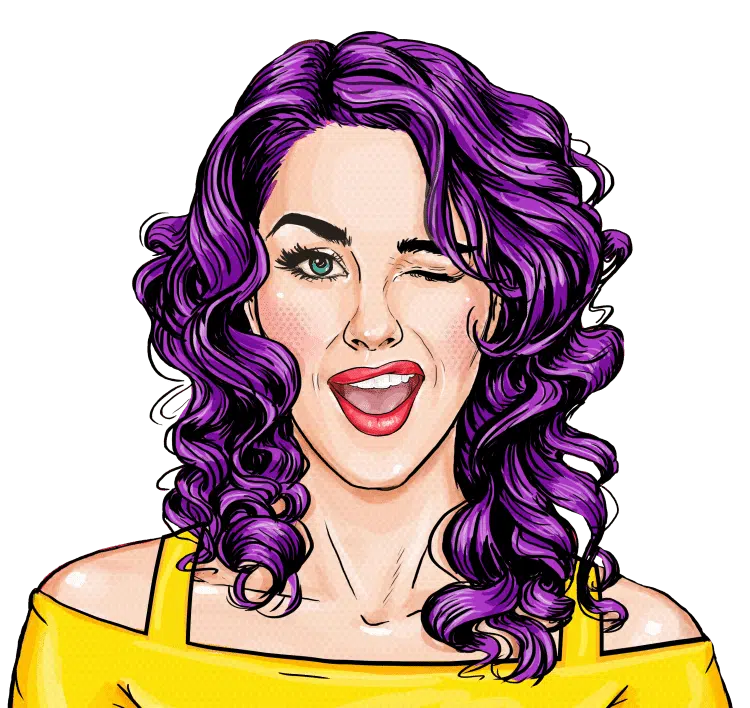

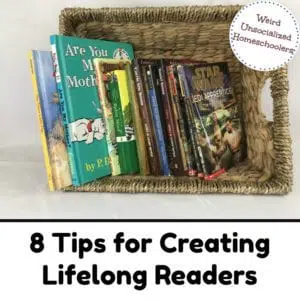
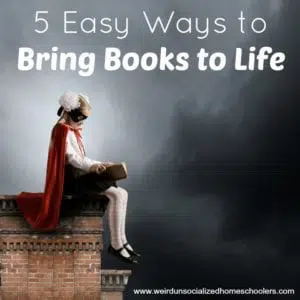
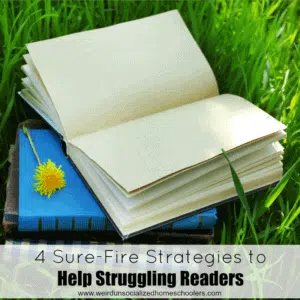

Another helpful article! Thanks, Heather! ❤️
I found CHARLIE AND THE CHOCOLATE FACTORY really relevant to my life because of grandparents in the household and parents who worked and aspired.
And also all the great secondary characters in Charlie’s purview.
Important to look at the relationships and connections between characters like in the NICE KIDS blog post.
And a lot of kids have wide peer groups, especially gifted ones. There is a seven-year spread for so many schooled kids. And a gifted kid may have about seven to nine years of ability threshold.
So do they read for the youngest; the middle; the oldest?
This is why I prefer books and plays with ensemble casts where possible where I don’t only have to relate to one character.